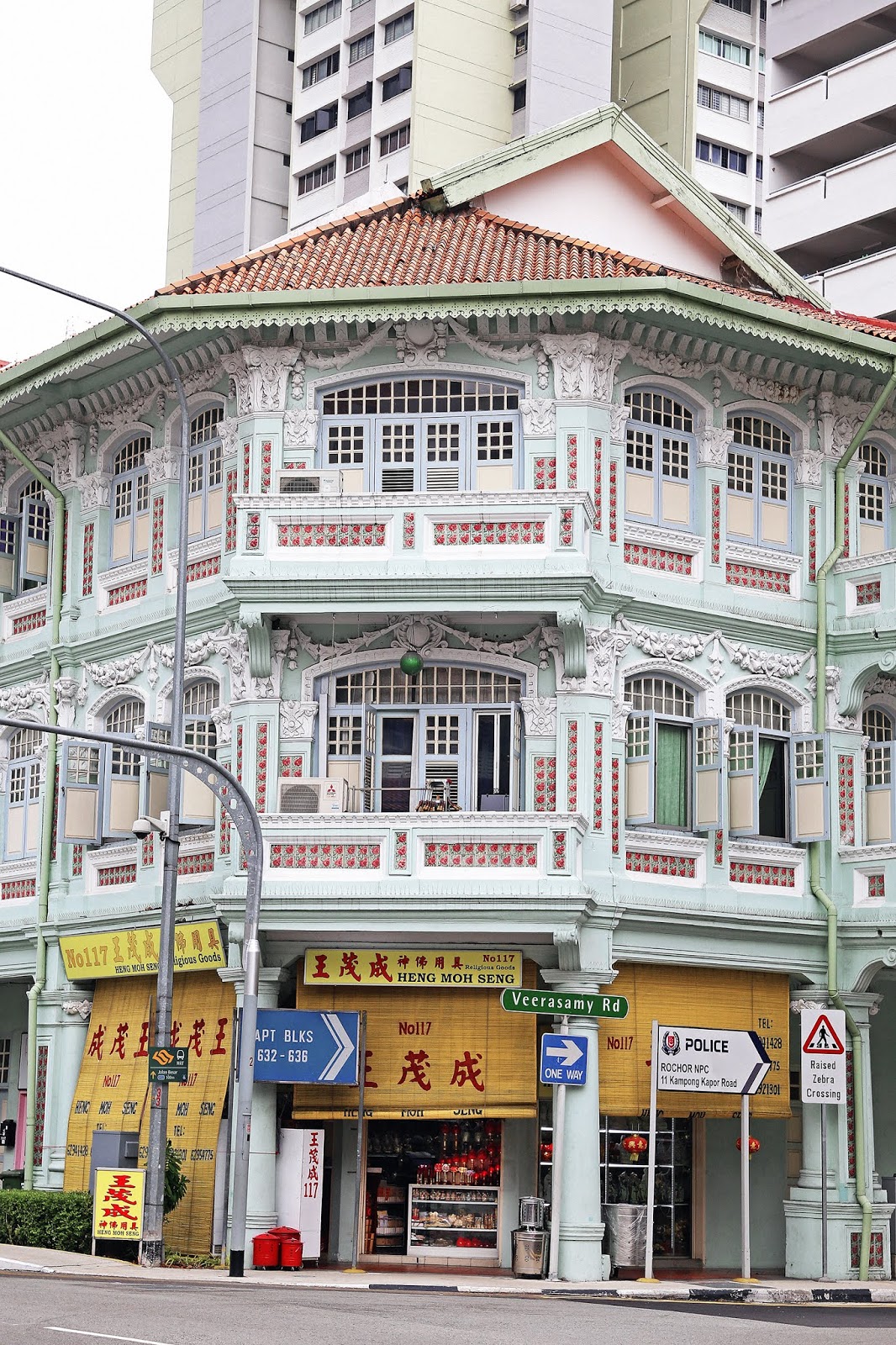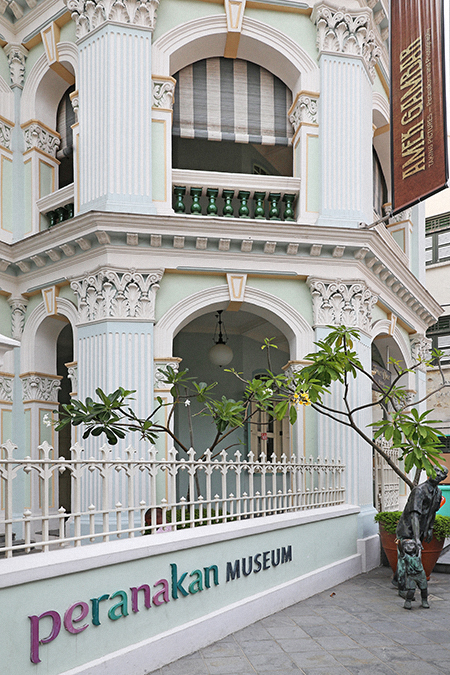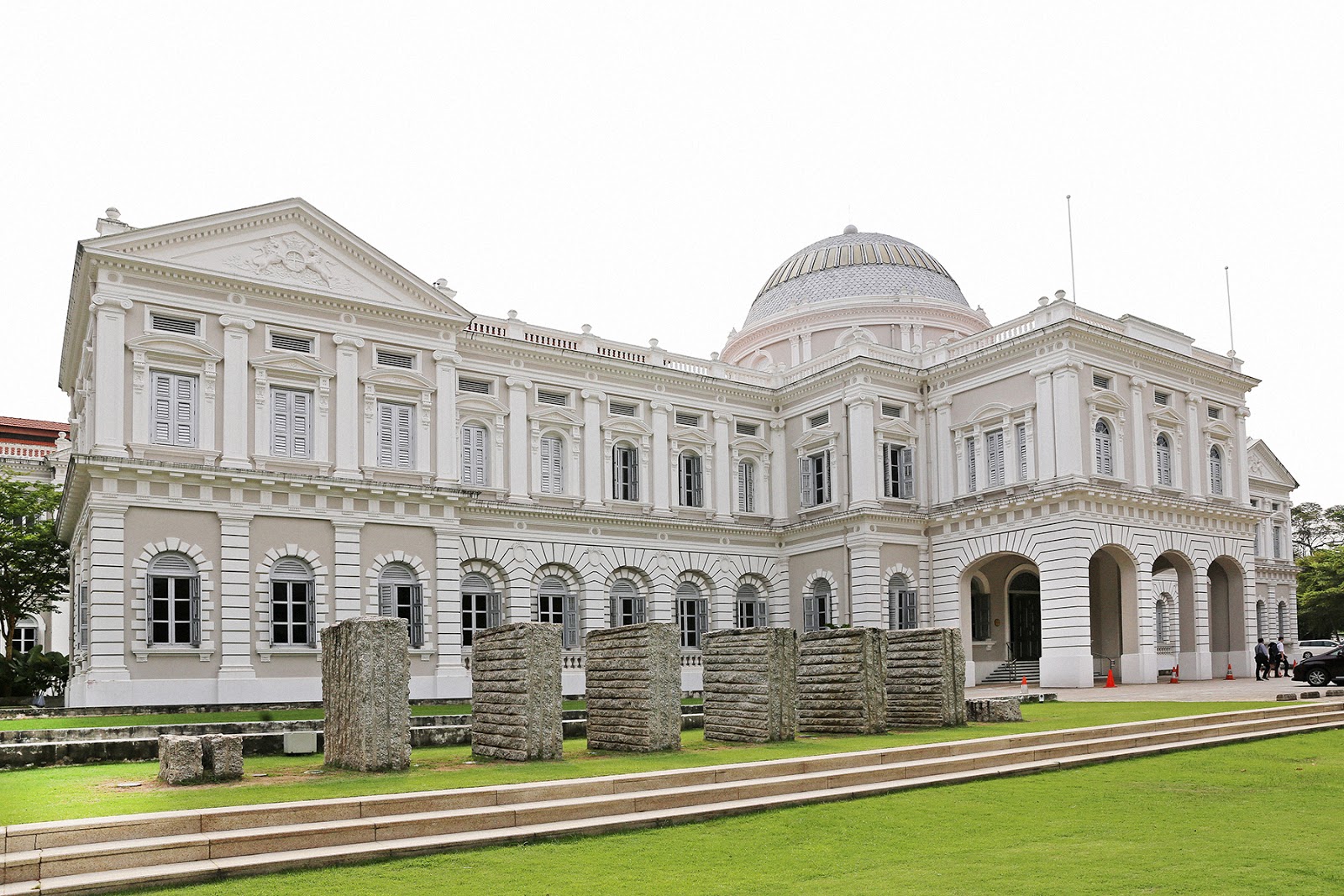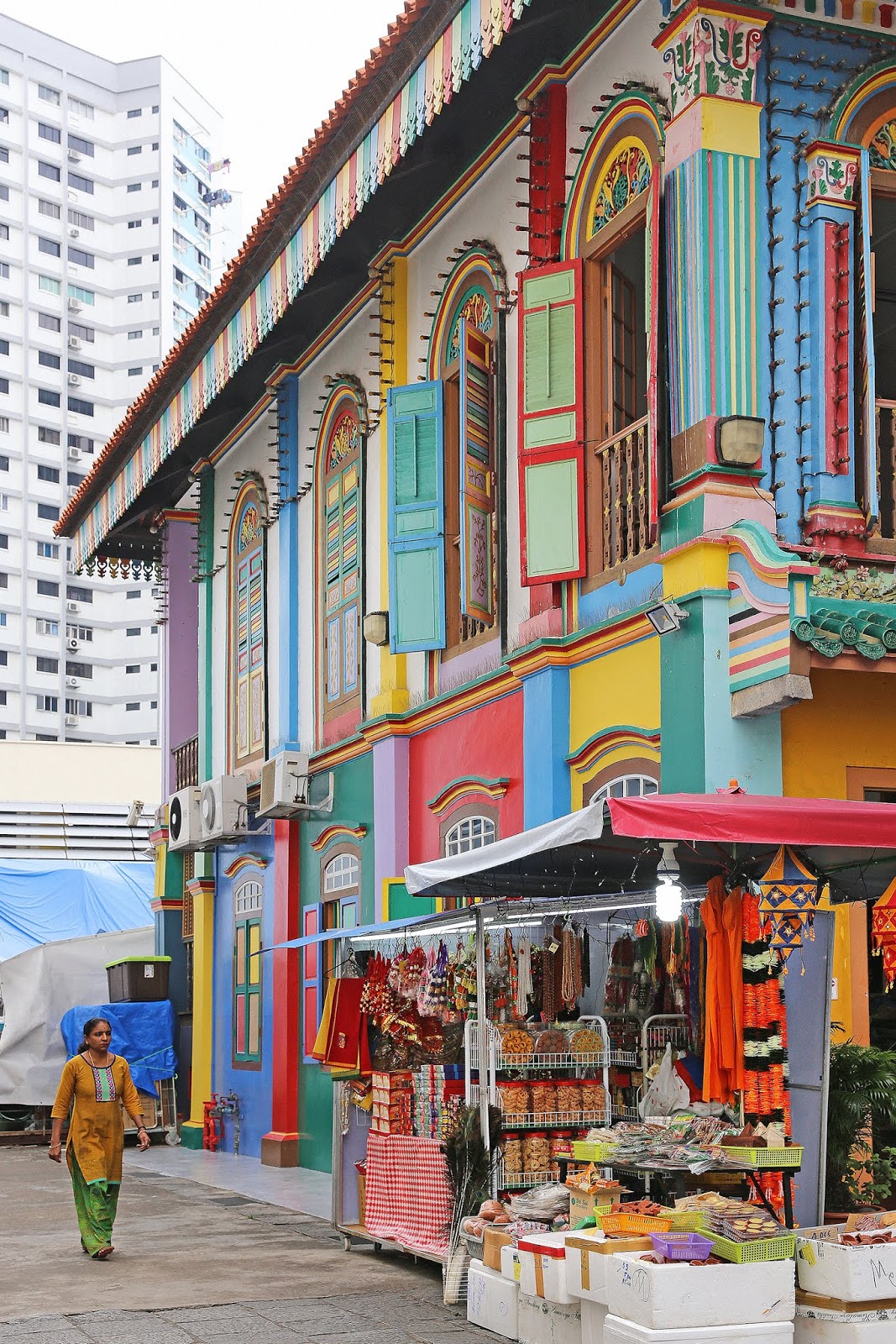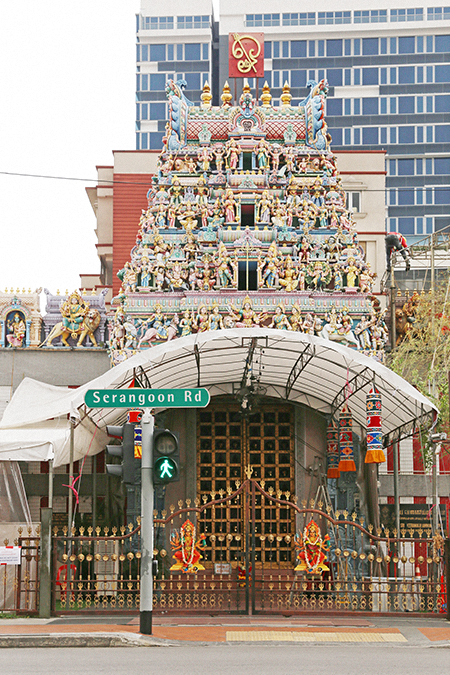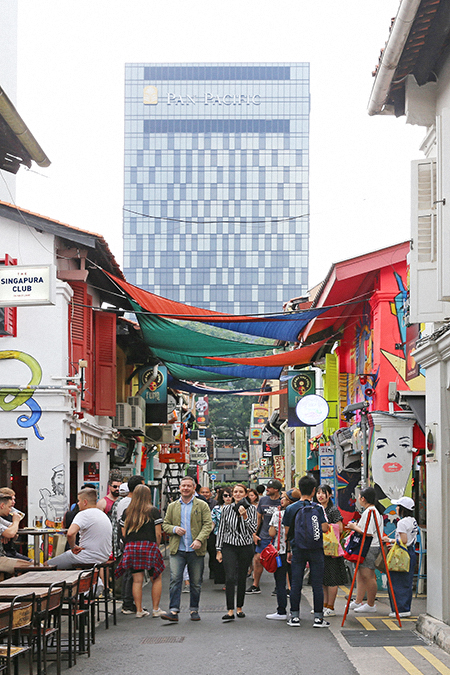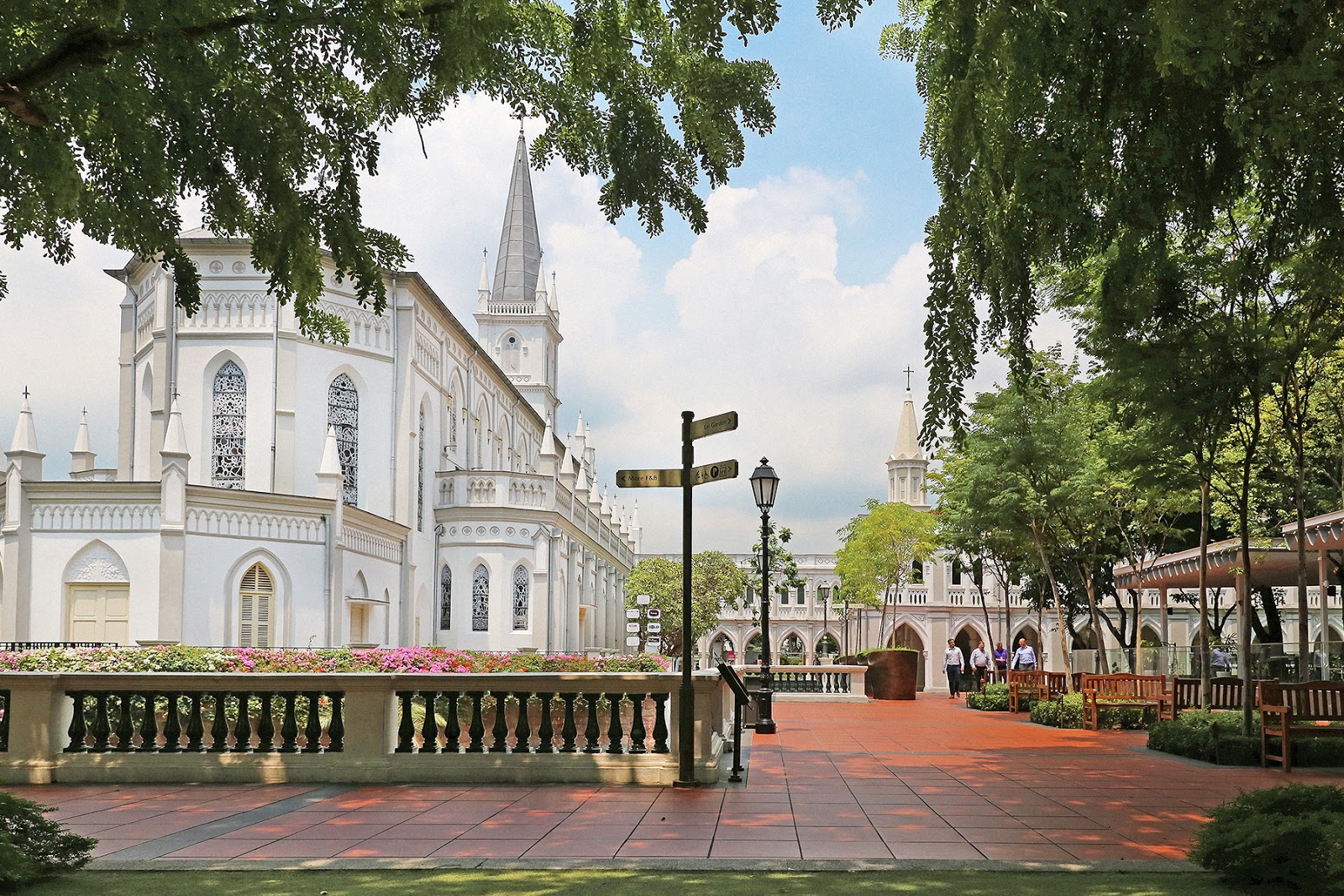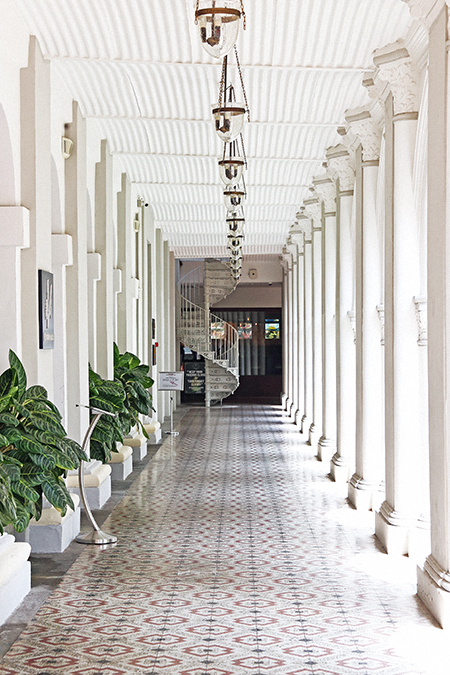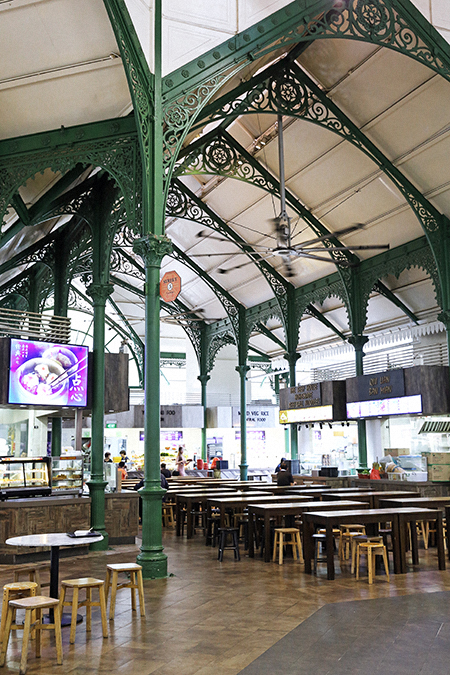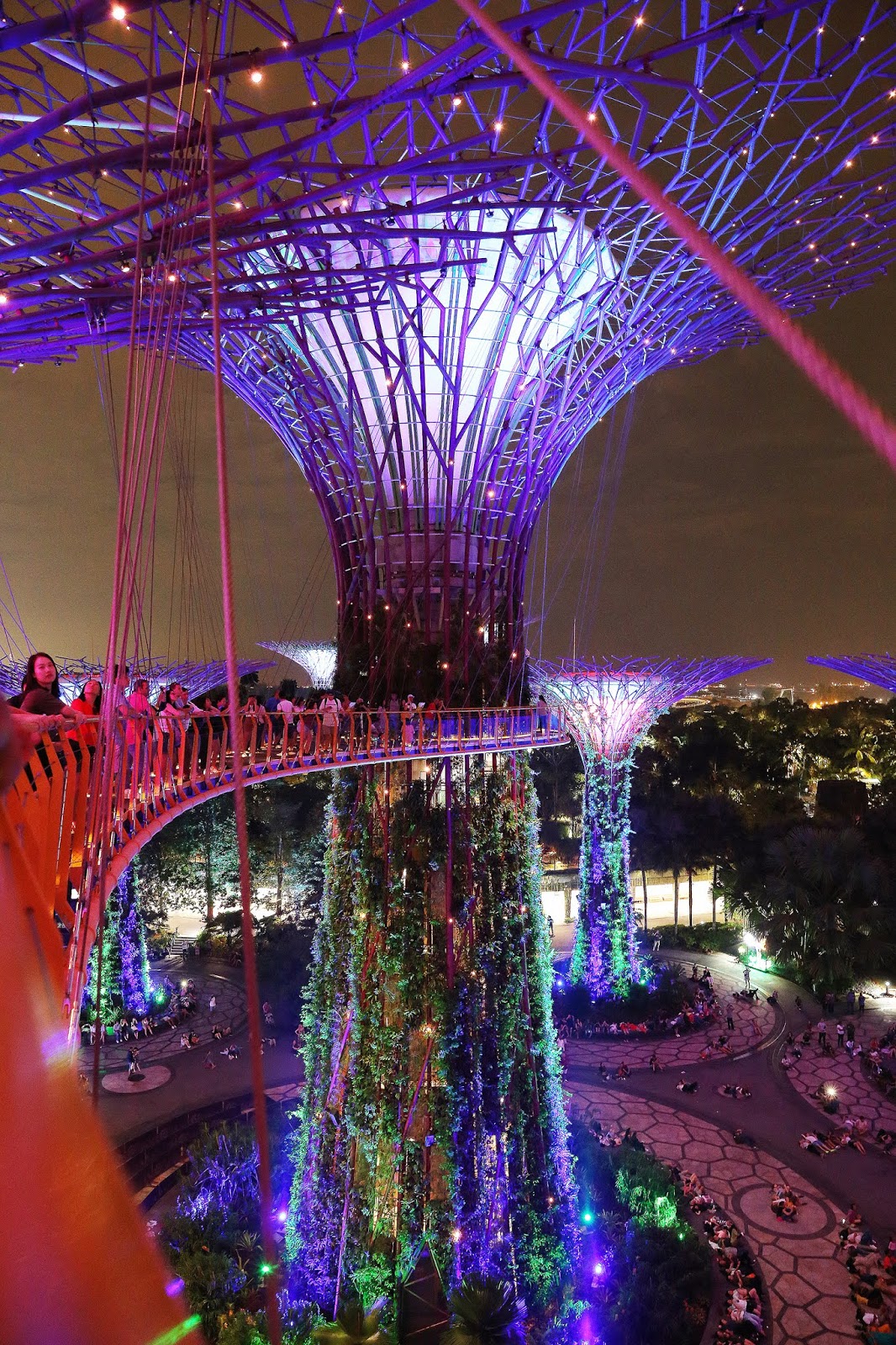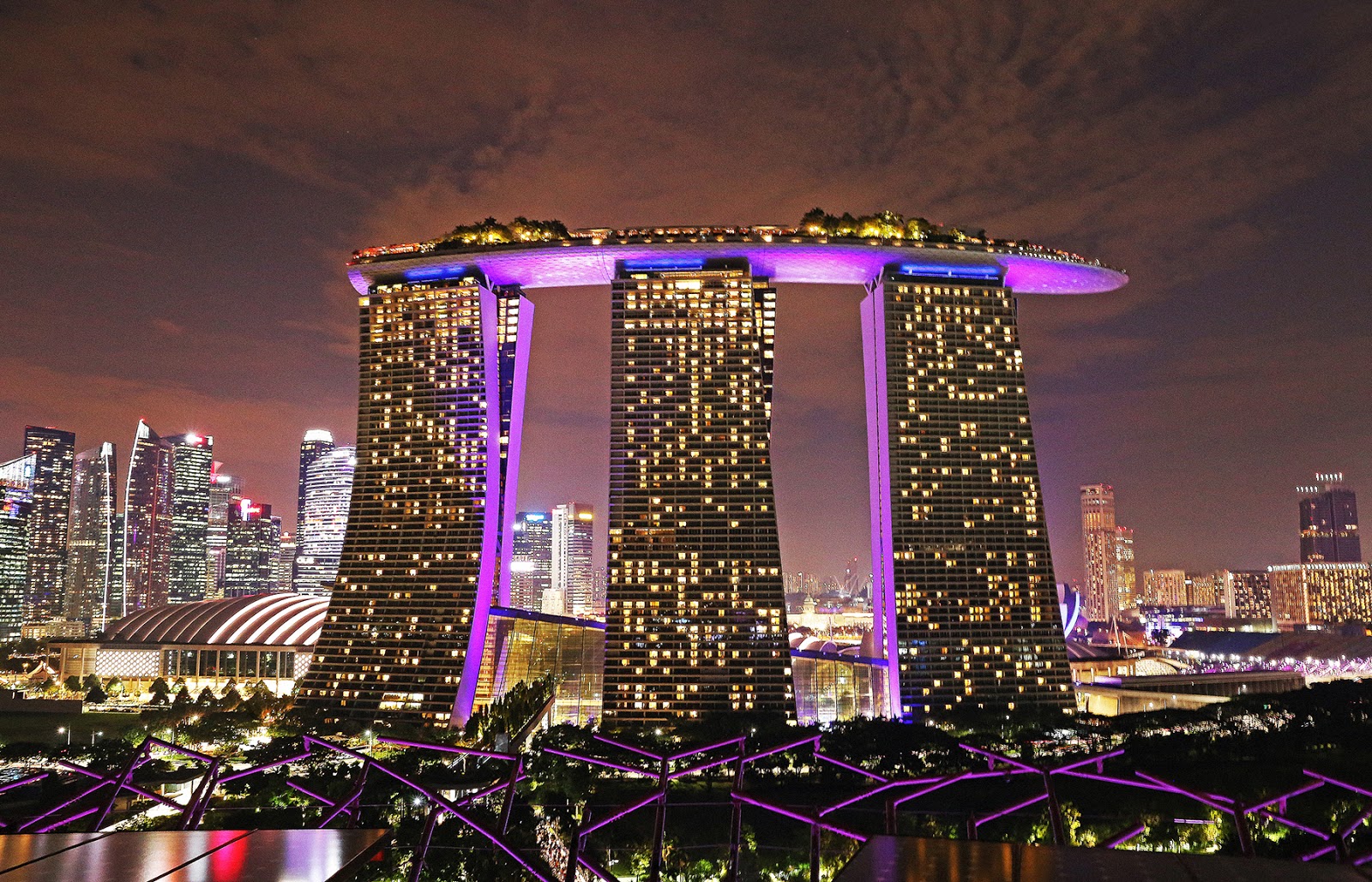10 THINGS TO SEE, DO, & VISIT IN SINGAPORE: A GUIDE BY A REAL-LIFE CRAZY RICH ASIAN
You would’ve read from my previous story about my identity, heritage, and upbringing that I’ve spent much of my childhood in Singapore. The ‘Little Red Dot’ on the world map that has been brought to wider attention thanks to the blockbuster Crazy Rich Asians (cue: “I prefered the book, and mine’s the 1st Edition, darling”). Even to a semi-local like me, Singapore is an enigma wrapped in a mystery. To start with: its juxtaposition of futuristic skyscrapers and architectural styles ranging from classical Chinese to British colonial. Some consider Singapore to be sterile; I prefer to call it a safe, sanitised, and condensed version of some of Asia’s best quirks. A highlights reel, if you may. In that spirit, here is my insider’s guide to this unique country and how to get a feel for Singapore’s culture and history. And you don’t even need to be a CRA, because I’m thoughtful like that, sweetie darling!
1.
HAW PAR VILLA
If you are a Chinese child of a certain upbringing, your parents would have certainly brought you to Haw Par Villa to scare you onto the straight and narrow. What was intended by the Tiger Balm brothers to be the “Oriental Disneyland” has since been a cautionary tale of what happens to children who behave badly; what with its delightfully tacky 1,000 statues and 150 dioramas depicting scenes from Chinese mythology and Confucianism morality tales. Come for the folklore, stay for the gory scenes of what happens to sinners when they reach Chinese hell. In its heyday, the Tiger Balm Gardens - or Haw Par Villa as it is now known - was the recreational destination; today its a nostalgic trip for my generation as well as day-trips for schoolchildren who need some sense scared into them, the old-fashioned way. The graphic scenes are pushed into uncanny valley territory thanks to the crackling soundtrack of 1920’s swing and jazz music. My personal favourite song to admire the morbid scenes of sinners being punished is the cheery tune of “Let’s Misbehave”.
HAW PAR VILLA
If you are a Chinese child of a certain upbringing, your parents would have certainly brought you to Haw Par Villa to scare you onto the straight and narrow. What was intended by the Tiger Balm brothers to be the “Oriental Disneyland” has since been a cautionary tale of what happens to children who behave badly; what with its delightfully tacky 1,000 statues and 150 dioramas depicting scenes from Chinese mythology and Confucianism morality tales. Come for the folklore, stay for the gory scenes of what happens to sinners when they reach Chinese hell. In its heyday, the Tiger Balm Gardens - or Haw Par Villa as it is now known - was the recreational destination; today its a nostalgic trip for my generation as well as day-trips for schoolchildren who need some sense scared into them, the old-fashioned way. The graphic scenes are pushed into uncanny valley territory thanks to the crackling soundtrack of 1920’s swing and jazz music. My personal favourite song to admire the morbid scenes of sinners being punished is the cheery tune of “Let’s Misbehave”.
2.
PERANAKAN MUSEUM & NATIONAL MUSEUM OF SINGAPORE
The Peranakan Museum (above) is your first stop to learning about the Singapore Peranakans or Straits Chinese, many of whom form the nation’s elite. Their unique culture - a blend of their adopted country’s customs and their traditions they sought to preserve after they left China during the 15th to 17th centuries - is beautifully depicted in the museum’s collection of artefacts and rich visual arts, as well as interactive studio set up where you can dress up with props.
The National Museum of Singapore (below) spans a wider narrative, from the 13th century to present day. The standout exhibitions are the permanent exhibitions Modern Colony (a showcase of cosmopolitan 1920’s and 30’s British Singapore, set in a black-and-white bungalow just like the Astrid Leong’s parent’s on Nassim Road) and Surviving Syonan (a gritty depiction of life in Syonan-To, as Singapore was named under the Japanese Occupation during World War II). The nation’s oldest museum also hosts contemporary and interdiscplinary work, such as Wings of a Rich Manouvre (below), a chorus of eight choreographed swinging chandeliers.

3.
CHINATOWN
There is a particular scene in the Crazy Rich Asians movie which, despite its departure from the source material, neatly tied up the plot while adding a visual richness. I’m talking about the scene where Eleanor Young meets Rachel Chu for a game of mahjong. The scene is filmed in Ann Siang Hill in Chinatown, a district full of character. The former immigrant enclave is a mosaic of new and old: where traditional apocatheries like Chop Wah On, historic temples such as Buddha Tooth Relic Temple jostle cheek-to-cheek with hip watering holes, boutiques, and juice bars. Start with a walk in the footsteps of Singapore’s early pioneers at the newly refurbished Chinatown Heritage Centre, then let your stomach lead you to the world’s cheapest Michelin-starred restaurant: Liao Fan Hong Kong Soya Sauce Chicken Rice & Noodle, where chef Chan Hon Meng’s iconic chicken rice dish will set you back all of S$2. When night falls, head to Duxton Hill to my favourite experimental cocktail bar Tippling Club for The Jolly Green Giant, a sweet blend of gin and peas.
CHINATOWN
There is a particular scene in the Crazy Rich Asians movie which, despite its departure from the source material, neatly tied up the plot while adding a visual richness. I’m talking about the scene where Eleanor Young meets Rachel Chu for a game of mahjong. The scene is filmed in Ann Siang Hill in Chinatown, a district full of character. The former immigrant enclave is a mosaic of new and old: where traditional apocatheries like Chop Wah On, historic temples such as Buddha Tooth Relic Temple jostle cheek-to-cheek with hip watering holes, boutiques, and juice bars. Start with a walk in the footsteps of Singapore’s early pioneers at the newly refurbished Chinatown Heritage Centre, then let your stomach lead you to the world’s cheapest Michelin-starred restaurant: Liao Fan Hong Kong Soya Sauce Chicken Rice & Noodle, where chef Chan Hon Meng’s iconic chicken rice dish will set you back all of S$2. When night falls, head to Duxton Hill to my favourite experimental cocktail bar Tippling Club for The Jolly Green Giant, a sweet blend of gin and peas.
4.
LITTLE INDIA
Once a district of cattle herders and brick kilns, Little India is now a bohemian enclave of artists and one of Singapore’s most colourful districts. Gone are the Europeans who lived here in the 1840s for the racecourse; but the Hindu temples, goldsmiths, flower garland vendors, and saree shops remain. Singaporeans of all ethnicities love Mustafa, the 24-hour shopping centre institution where one can find the most obscure objects (I tracked down a subtitled copy of Bollywood classic Disco Dancer on DVD). The culinary offerings are delightful: from South Indian vegetarian food (Banana Leaf Apollo is a favourite) to roti prata (flat, thin pancakes) and teh tarik (watching the brewers ‘pull’ the hot milk tea is a show in itself). Then there‘s the district’s ridiculously photogenic buildings; a mix of Hindu and Chinese temples, mosques and churches. Unmissable (in more than one sense of the word) is Tan Teng Niah (above), the last surviving Chinese villa in Little India whose colourful facade is a photographer’s dream come true. Sri Veeramakaliamman Temple (left) is Singapore’s oldest Hindu temple. Dedicated to the goddess Kali, it was a place of refuge during WWII and miraculously escaped air raids and bombing, completely unscathed.
LITTLE INDIA
Once a district of cattle herders and brick kilns, Little India is now a bohemian enclave of artists and one of Singapore’s most colourful districts. Gone are the Europeans who lived here in the 1840s for the racecourse; but the Hindu temples, goldsmiths, flower garland vendors, and saree shops remain. Singaporeans of all ethnicities love Mustafa, the 24-hour shopping centre institution where one can find the most obscure objects (I tracked down a subtitled copy of Bollywood classic Disco Dancer on DVD). The culinary offerings are delightful: from South Indian vegetarian food (Banana Leaf Apollo is a favourite) to roti prata (flat, thin pancakes) and teh tarik (watching the brewers ‘pull’ the hot milk tea is a show in itself). Then there‘s the district’s ridiculously photogenic buildings; a mix of Hindu and Chinese temples, mosques and churches. Unmissable (in more than one sense of the word) is Tan Teng Niah (above), the last surviving Chinese villa in Little India whose colourful facade is a photographer’s dream come true. Sri Veeramakaliamman Temple (left) is Singapore’s oldest Hindu temple. Dedicated to the goddess Kali, it was a place of refuge during WWII and miraculously escaped air raids and bombing, completely unscathed.
5.
KAMPONG GLAM
The very name Kampong (village, provincial) Glam (glamourous) is an oxymoron, but the Malay enclave of Singapore really is a wonderfully eclectic contradiction. Kampong Glam, which was allocated to the Malay, Arab, and Bugis communities is now a trendy lifestyle scene set aside the country’s oldest urban quarter. Haji Lane is awash with indie boutiques, hip bars, and trendy cafes. The ever-changing lanscape of Haji Lane makes it difficult to recommend, but the Singapura Club (above) is a mainstay for eccentric drinks with a local flavour such as Milo Dinosaur cocktails. Arab Street and Bussorah Street are the places to go to for traditional wares such as Persian carpets and kebaya (traditional dress), as well as a haberdasher’s dream of fabrics, sequins, and embroidery (I recommend Royal Fabrics). Then there is the historical aspect of Kampong Glam the 2 icons of which are the Sultan Mosque and the Malay Heritage Centre on the grounds of the Istana (palace) to get a good sense of the rich history of Singapore’s Malay community. There are gastronomical offerings aplently, from local delicacies such as nasi padang (steamed rice served with various dishes. Hjh Maimunah is a local favourite) to Malay kuih (sweet, bite-sized desserts).
KAMPONG GLAM
The very name Kampong (village, provincial) Glam (glamourous) is an oxymoron, but the Malay enclave of Singapore really is a wonderfully eclectic contradiction. Kampong Glam, which was allocated to the Malay, Arab, and Bugis communities is now a trendy lifestyle scene set aside the country’s oldest urban quarter. Haji Lane is awash with indie boutiques, hip bars, and trendy cafes. The ever-changing lanscape of Haji Lane makes it difficult to recommend, but the Singapura Club (above) is a mainstay for eccentric drinks with a local flavour such as Milo Dinosaur cocktails. Arab Street and Bussorah Street are the places to go to for traditional wares such as Persian carpets and kebaya (traditional dress), as well as a haberdasher’s dream of fabrics, sequins, and embroidery (I recommend Royal Fabrics). Then there is the historical aspect of Kampong Glam the 2 icons of which are the Sultan Mosque and the Malay Heritage Centre on the grounds of the Istana (palace) to get a good sense of the rich history of Singapore’s Malay community. There are gastronomical offerings aplently, from local delicacies such as nasi padang (steamed rice served with various dishes. Hjh Maimunah is a local favourite) to Malay kuih (sweet, bite-sized desserts).
6. CHIJMES You may recognise Chijmes (simply pronounced Chimes. I don’t know what the point of the silent ‘J’ is) as the scene of Colin and Araminta’s wedding. This heritage building, built in 1852, was a Catholic convent and school. Even if you don’t plan to wed in the Gothic-style chapel (which is now a function hall) there is still a wealth to explore. Chijmes is now a complex of restaurants, cafes, and bars surrounding a lush green courtyard. I have always enjoyed the Pomelo & Tiger Prawn Salad and XO Braised Lobster Noodles (a classic childhood staple) at IndoChine. One of my favourite Japanese-western fusion chains, Tonkatsu by Ma Maison, has an outpost here - their pork cutlets are so wonderfully hearty and filling. Japanese cuisine seem to form the majority of the restaurants at Chijmes, but there are also other international offerings such as Carnivore Brazilian Churrascaria to New Zealand-inspired MOA Tiki Bar & Grill. |
By now, you might be thinking that Singapore’s attractions are overwhelmingly food-centric, and I don’t blame you. Well, just a little, but only because as a Malaysian it is my duty to be take the snob stance on Malaysian food vs Singaporean food. But don’t let that stop you from eating your way across the island. If street food is more up your alley, you’d love hawker centres: a smorgasbord of different food stalls, some of them run by owners who’ve spent a lifetime perfecting their one signature dish; from satay, to chilli crab and sambal belacan stingray. In the movie, Nick takes Rachel to Newton Food Centre, while my destination of choice is Lau Pa Sat (above), set in Southeast Asia’s oldest Victorian design structure.
Another dining destination I always visit when in town is P.S Cafe. Of all their branches, my personal favourite is the on Harding Road (below). Set in the verdant enclave of Dempsey Hill away from the hustle and bustle of the city, it’s the most restorative place to refuel and reenergise over a plate of P.S Fluffy Pancakes and P.S Truffle Shoestring Fries, all washed down with a lychee & lime crushed fruit soda. The perfect spot for brunch, breakfast, and all-day dining.
8.
SIP A SINGAPORE SLING
AND THROW BACK A TIGER BEER
You can’t come to Singapore and not have a Singapore Sling: a Collins of gin, cherry-flavored brandy, triple sec, Benedictine, pineapple juice, lime juice, and grenadine. In Crazy Rich Asians (the novel, darling) Peik Lin admits to never haven’t tried one (”Isn’t it for tourists?”) but made sure Rachel’s mother (”But I am a tourist!”) got to try Singapore’s most famous cocktail while she was in town. Ideally you’d sip a Singapore Sling at its birthplace: the Long Bar in Singapore’s iconic Raffles Hotel. I always enjoy afternoon tea at this institution, and am looking forward for the hotel to reopen this year. In the meantime, head to Loof where you can enjoy a Singapore Sling(and the local Tiger Beer) with a view of Raffles Hote and Marina Bay Sands in the distance. Two iconic Singaporean drinks against a backdrop of 2 iconic Singaporean buildings (one classic, one ultra-modern) in one of the city’s most fashionable rooftop bars. While you’re there,have the Loof Original Ramly 23 burger and Loof’s signature chilli crab waffle fries.
9.
GARDENS BY THE BAY
Even if you didn’t watch the movie, you would easily recognise Gardens By The Bay from the trailer as the reception venue for Colin and Minty’s ‘wedding of the century’ (or from almost every Instagram post geotagged in Singapore, for that matter). The vast verdant complex with its many sections, from pavilions to lakes and everything in between is impressive enough - my personal favourite is the Cloud Forest (below), a multilevel, misty temperature-controlled biodome packed with lush mountain vegetation which is a welcome respite from the heat - are impressive enough. But the undisputed main attraction are the evening Light Shows in the Supertree Grove, when the giant trees light up and dance to themed musical medleys. I’d recommend watching the Garden Rhapsody Show at 7:45 pm from ground level, then climbing up to the OCBC Skywalk to witness the second show at 8:45 pm from 22 metres above ground.
10.
MARINA BAY SANDS
Finally, one of Singapore’s most distinguishable modern landmarks: the curiously shaped Marina Bay Sands. Reminiscent of an enormous ship balancing precariously atop 3 skyscrapers, I imagine a biblical story in which a space-age Noah's Ark remained on its unlikely perch after the apocalyptic flood receded. Digressing: in both the novel and the movie, the closing scene takes place in Marina Bay Sands, both versions which while wildly different still deliver sequel-ready scenarios. Outside of fiction, Marina Bay Sands is also full of drama. It’s an enormous integrated resort with a luxury hotel (where all the gamblers flock to, so expect a lot of high-octane peacock-ing in the nightclubs, bars, and casinos) as well as the world's highest and largest infinity pool (You know, that one that you can’t escape from on social media). I am especially partial to a drink and nibbles at Ce La Vi restaurant and skybar, it is the prime spot for people-watching as it draws a stylish crowd of both locals and internationals.
I hope you enjoyed my little guide to Singapore as well as a glimpse into the culture behind one of my favourite novels. x

